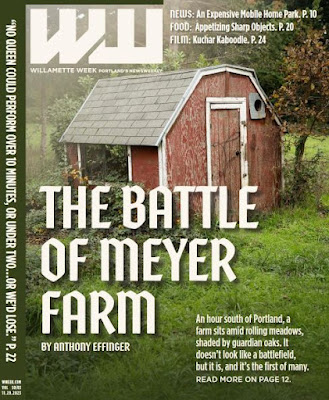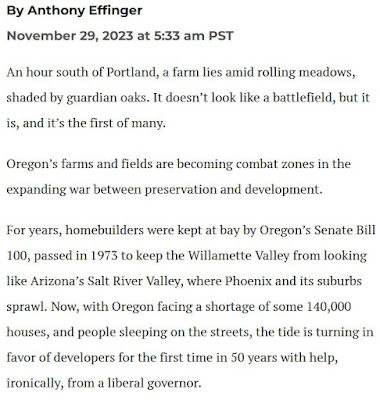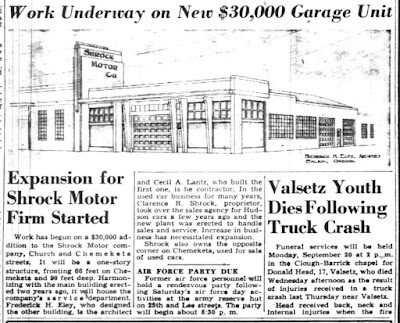Three themes stood out here on the blog for 2023: Parking reform; new projects downtown; and the City's coverup for a cop who killed Marganne Allen as she was biking on High Street.
 |
| WSJ earlier this year and Capitol Shopping Center now Red Lot |
Parking Reform
Though it was driven by State climate requirements, Salem was hardly alone in the move for compliance, and Salem had already been chipping away at parking requirements, it was nevertheless terrific to see the City completely eliminate minimum required parking on new development and changes in use. We might look back on 2023 as the tipping point for real change in the way we approach temporary car storage. As part of the State regulations the City also adopted rules for climate mitigation on new large parking lots. On its own, the City formally initiated a project for right-priced curbside parking on downtown streets. Actually installing meters is a few years out yet, but it's good to see it initiated for real.
- "City Council, February 27th - Civic Center and downtown Parking"
- "City Council, April 10th - Airport Mania and Parking"
- "DAB starts Discussion of Parking Schedule, Previews Council Report"
- "Housing, Livability, and Cars: Notes on Overlay Zones and Origin of Free Parking"
- "City Council, October 9th - Climate Mitigation for Parking Lots"
 |
| New Holman Hotel, Nishioka Building, Pioneer Trust Looking north on Commercial Street at Ferry |
Downtown Building
Though it was completed a couple years ago, the Nishioka building may be the pivot project for this decade in the way the McGilchrist & Roth project was in the last decade. The Nishioka building was proof-of-concept for small apartment homes with minimal parking. The project on the former Nordstrom block followed, and this year there were more announcements. None are certain, and some may be cancelled, but a kind of dam seems to have burst and we will see more of them. In nearly all cases eliminating minimum required parking allowed for projects to pencil out and move forward.
- 16 apartments behind the England-Wade building (this one seems most certain)
- A project for the old City Hall site (Planning sent a letter on December 13th with a list of items that still needed to be addressed before it was "deemed complete." Yesterday the paper said there are also hopes for Belluschi crater next door.)
- Block 50 demolition and request for proposals (still very early)
- And the New Holman Hotel opened (on the site of a former parking garage!)
- Hope Plaza finally got going (it was approved a couple years ago)
A little farther away from downtown two large projects were announced and one completed:
- The former Truitt cannery site (at the moment, this seems like the most vaporous of the bunch)
- Gussie Bell Brown project, affordable housing on the old General Hospital site
- Yaquina Hall was opened (didn't blog about it here)
Hopefully this momentum downtown and close-in can be not just maintained, but accelerated. The City's plan for Climate-Friendly Areas (more on this below) requires it, and any general interest in downtown vitality calls for a shift from seeing it as a drive-to destination like a mall and instead understanding it as a real neighborhood and place.



















































